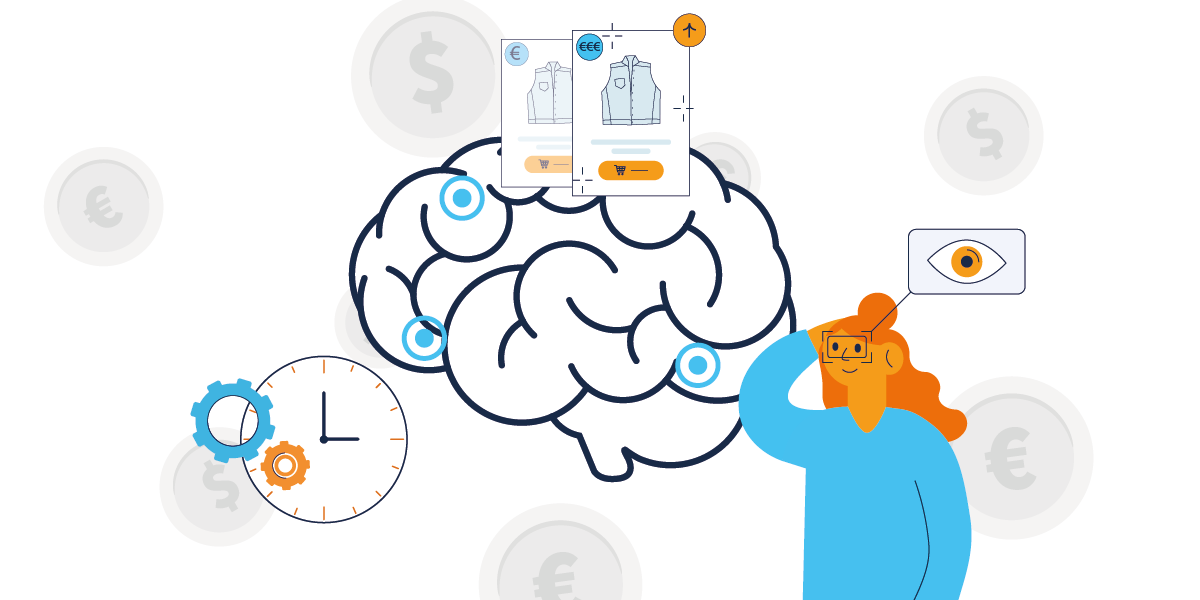In the final part of this blog series, we would like to give you a tip on the general design of your website. There are a few pitfalls when it comes to placing certain elements in your online shop.
But don’t worry, this time we’ve also collected some tips to help you get your marketing strategy off the ground.
Supermarket as a prime example
Let’s step away from e-commerce for a moment and take a look at bricks and mortar. You can learn a lot from supermarkets for your online shop. They are not randomly arranged. There is a logic behind them.
For example, have you ever noticed that fresh produce such as fruits, vegetables or meat is usually located at the front of the supermarket? Daily staples such as milk or eggs are usually in the back. This is to ensure that shoppers see as much of the assortment as possible and may buy more than is actually on the shopping list. In addition, similar or complementary products can usually be found on adjacent shelves. This often leads to cross-selling, where the customer buys the matching sauce with the packet of pasta. On the shelf itself, products are always arranged so that the cheaper items are further down, out of the customer’s immediate field of vision. Products that the supermarket wants to draw attention to are often presented in particularly eye-catching displays. They are designed to keep you in the supermarket as long as possible and lead to a product or two being added to your cart. This increases the supermarket’s sales opportunities.
Adaption to online retail
Now you don’t have a supermarket, you have an online shop. Of course, your customers won’t find any shelves or displays. But the principle is the same. In a few simple steps, you can customize your website so that your customers stay longer and even buy more.
If you want to find out where your users’ attention is most focused, you can use eye-tracking or a tool for heatmap tracking, for example. This is a method that allows you to check where your users look first and longest. You can then place a call-to-action button or other incentive there. Most of the time, CTAs make sense on the bottom right of the page, as the human eye always focuses from top left to bottom right.
But eye-tracking and heatmap-analyses can also be used to optimize the placement of additional alternatives on product detail pages or in shopping carts. Of course, this also works for cross-selling and up-selling. If you have a special promotion or sale going on, you can use eye-catching colors in the menu or on the homepage to draw attention to it – similar to supermarket displays.
Good things take time
Give yourself plenty of time to design your online shop or new campaigns. The eye-tracking heatmap may tell you where your users are focused, but the visual design is still important. What colors are best, how big should a metric be, and when is the right time? Thanks to A/B or multivariate testing, you can answer all these questions and gain valuable insights to optimize your marketing campaigns, in addition to your heatmap results. Now nothing stands in the way of your perfect marketing strategy!
If you are interested in testing our Whitepaper may help.
